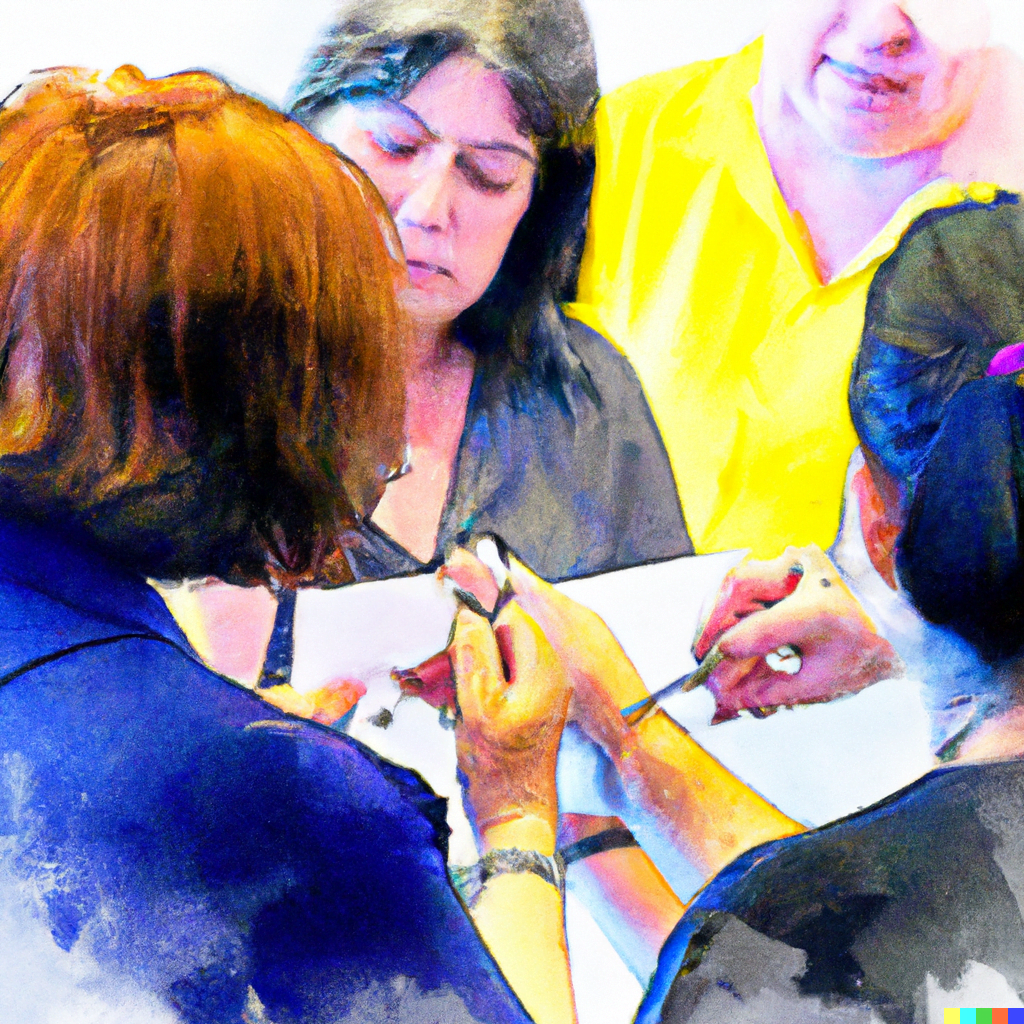Facilitation skills are critical for successful product development as it is a collaborative effort that involves working closely with stakeholders, such as customers, developers, designers, and product managers. As a facilitator, your role is to ensure that these conversations run smoothly and result in actionable decisions that move the project forward.
To do this, you need to have strong facilitation skills, including the ability to actively listen, ask insightful questions, manage conflict, and make decisions. In this article, we’ll explore some of the essential facilitation skills for working with stakeholders in product development and provide practical tips on how to apply them.

Key facilitation skills
Active Listening
Active listening is the foundation of effective facilitation. When you actively listen, you not only hear what someone is saying but also pay attention to their body language, tone of voice, and other nonverbal cues. This helps you gain a deeper understanding of their perspective and shows that you value their input.
Here are some tips for active listening:
- Give the person your undivided attention and avoid distractions.
- Maintain eye contact and an open posture that signals your engagement.
- Use verbal cues, such as nodding or saying “mm-hmm,” to show that you are listening.
- Paraphrase what the person is saying to ensure that you’ve understood them correctly.
- Ask follow-up questions to explore their perspective further.
Conflict Resolution
In product development, conflicts can arise between stakeholders who have different opinions or priorities. As a facilitator, your goal is to help the group resolve these conflicts in a positive and productive way.
Here are some tips for conflict resolution:
- Acknowledge and validate everyone’s perspective, even if you don’t agree with it.
- Identify the root cause of the conflict and work to address it.
- Encourage active listening and ensure that everyone has an opportunity to speak.
- Use structured problem-solving techniques, such as brainstorming or SWOT analysis, to encourage collaboration and generate solutions.
- Facilitate a decision-making process that takes everyone’s input into account.
Decision-Making
Facilitators play a crucial role in guiding the group toward making informed decisions that align with project goals and stakeholder needs. To do this, you need to be able to:
- Clearly articulate the decision that needs to be made and why it matters.
- Present relevant information and data in a clear and concise manner.
- Encourage discussion and debate to explore different options and perspectives.
- Use decision-making frameworks, such as majority vote or consensus, to help the group come to a decision.
- Ensure that the decision is recorded and communicated to all stakeholders.
Tips for Effective Facilitation
In addition to the specific skills outlined above, there are several general tips that can help you become a more effective facilitator when working with stakeholders in product development:
- Prepare for the meeting ahead of time by setting clear objectives, distributing materials or agendas, and clarifying the roles and expectations of all participants.
- Keep the conversation on track by using time management techniques, such as using a timer or agenda, and refocusing the discussion when it starts to go off topic.
- Stay neutral and avoid taking sides or showing favoritism toward any particular stakeholder or idea.
- Adapt your approach to suit the group’s needs and preferences, such as using visual aids or hands-on activities to engage participants.
- Follow up with the group after the meeting to ensure that action items are being implemented and to gather feedback on the facilitation process.
- Check out this guide for a bunch more ideas
FAQs
Q: What happens if stakeholders cannot come to a decision?
A: As a facilitator, your job is to guide the group toward making a decision, but it’s ultimately up to the stakeholders to come to a consensus. If they cannot agree, you may need to call a follow-up meeting or involve a higher authority to make the final decision.
Q: What if a stakeholder is being disruptive or aggressive during the meeting?
A: Acknowledge their behavior and remind them of the group’s ground rules, such as treating everyone with respect and allowing everyone to speak. If their behavior persists, you may need to take the issue offline and address it privately.
Q: How can I build my facilitation skills?
A: Practice is key to building your facilitation skills. Look for opportunities to facilitate meetings or group discussions, and seek feedback from peers or mentors on areas for improvement. Consider taking formal facilitation training or certification programs to further develop your skills.
Conclusion
Facilitation skills are critical for anyone working in product development, as they enable you to effectively engage and communicate with stakeholders to move projects forward. By mastering active listening, conflict resolution, and decision-making, and following general tips for effective facilitation, you’ll be able to guide stakeholders toward positive outcomes and achieve project success.
Leave a Reply